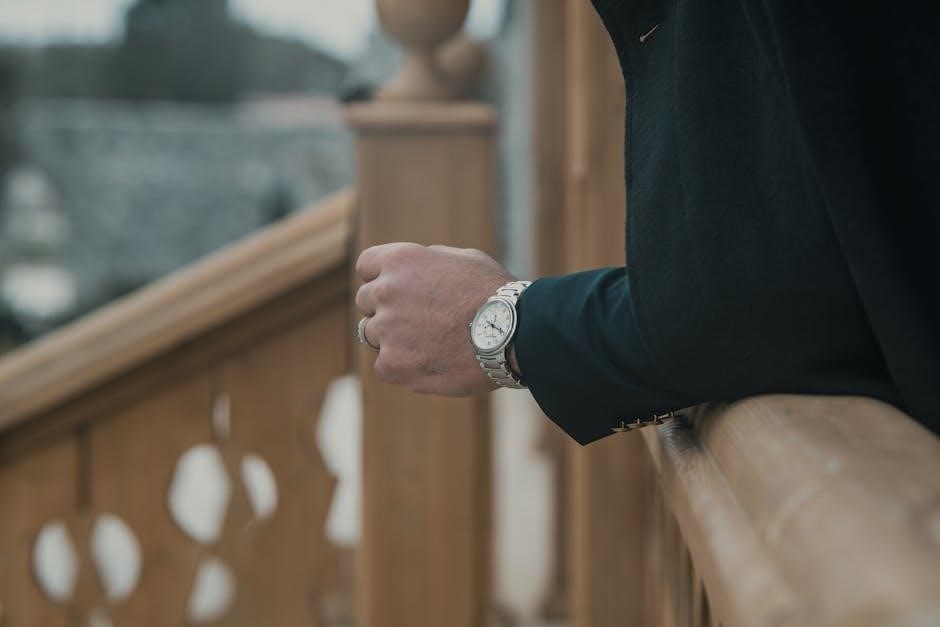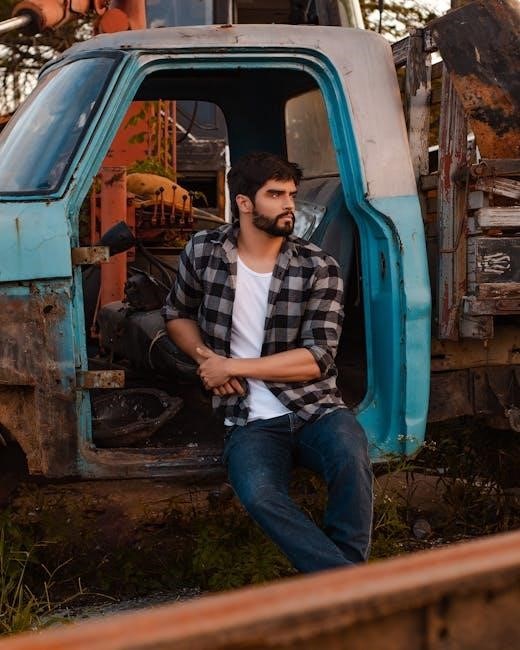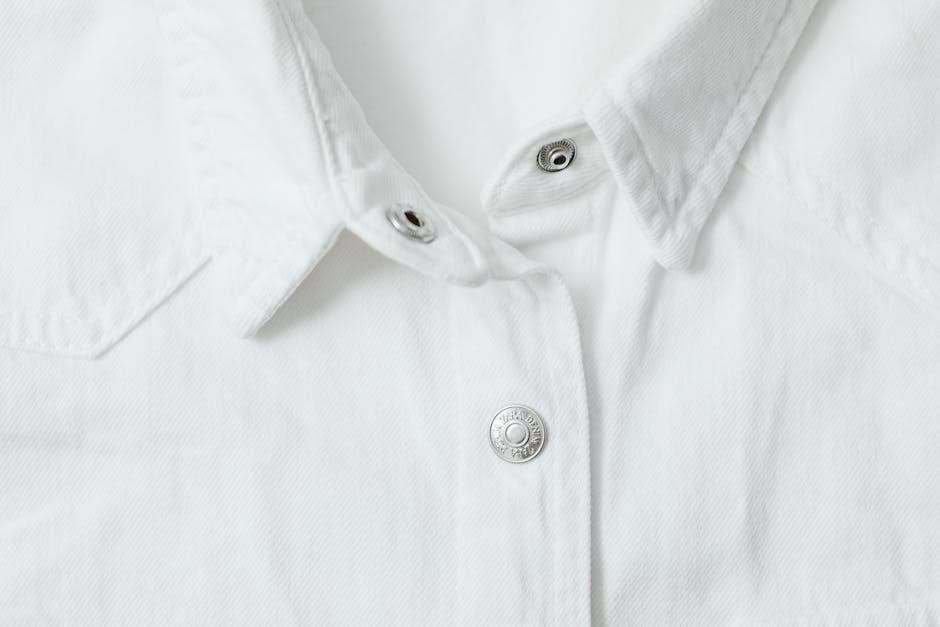A standing seam metal roof offers exceptional durability, weather resistance, and aesthetic appeal. Its concealed fasteners and raised seams provide a sleek, modern look, ideal for both residential and commercial buildings.
Overview of Standing Seam Metal Roofing
Standing seam metal roofing is a durable, weather-tight system featuring raised seams and concealed fasteners. It offers a sleek, modern appearance while providing excellent resistance to water, fire, and impact. Suitable for various roof pitches, it is ideal for both residential and commercial applications. The system is known for its long lifespan and low maintenance requirements, making it a popular choice for builders and homeowners seeking a reliable roofing solution.
Key Features and Benefits
Standing seam metal roofs boast exceptional durability, weather-tightness, and fire resistance. Their concealed fastener system enhances both performance and aesthetics. The panels are lightweight yet strong, offering a modern, sleek appearance. With low maintenance needs and a long lifespan, they provide cost efficiency over time. Additionally, their ability to shed snow and ice prevents structural damage, making them ideal for various climates. These features combine to create a reliable and visually appealing roofing option for diverse architectural designs.
Types of Standing Seam Metal Roof Systems
Standing seam metal roofs come in snap-on, field-formed, and vertical leg systems, each offering unique installation advantages and architectural versatility for different building needs and designs.
Snap-On Standing Seam Systems
Snap-on standing seam systems feature pre-fabricated panels with clips that simply snap into place, eliminating the need for field seaming. This method ensures quick installation and consistent performance. Panels are typically 14-18 inches wide, with raised seams for water-tightness. The snap-on design allows for thermal expansion and contraction, reducing the risk of damage. Ideal for low to moderate pitch roofs, these systems offer a clean, modern aesthetic while maintaining durability and weather resistance, making them a popular choice for various architectural applications.
Field-Formed Standing Seam Systems
Field-formed standing seam systems are created on-site using portable machines to crimp and form seams, ensuring a precise fit for unique roof dimensions. This method allows for customization, as panels can be formed to exact lengths, reducing waste. The process involves attaching clips to the substrate and forming the seams mechanically, providing excellent weather-tightness. Field-formed systems are ideal for complex roof designs, offering flexibility and adaptability. They also maintain structural integrity while seamlessly integrating with other roofing components, making them a versatile choice for various architectural needs;
Vertical Leg Standing Seam Systems
Vertical leg standing seam systems feature taller seams, enhancing structural integrity and providing a distinct shadow effect. These systems are known for their weather-tightness and durability, making them ideal for various architectural designs. The vertical leg design allows for better load resistance and can accommodate different roof pitches. This system is popular for its adaptability and aesthetic appeal, offering a strong and visually pleasing roofing solution that stands out in both residential and commercial applications.
Technical Specifications and Details
Standing seam metal roofs are designed with precise technical specs, ensuring durability and weather-tightness. Panels are typically 14-18 inches wide with varying thicknesses for strength and versatility.
Panel Dimensions and Thickness
Standing seam metal roof panels typically range in width from 14 to 18 inches when finished. Thickness varies from 0.40 mm to 1.5 mm, with heavier gauges offering greater strength. Panel lengths can extend up to 45 feet, minimizing seams and enhancing weather-tightness. The dimensions and thickness are tailored to meet specific structural and aesthetic requirements, ensuring durability and adaptability for various roof pitches and designs. These specifications are critical for maintaining the roof’s integrity and performance over time.
Seam Height and Spacing
Standing seam metal roofs feature seams with heights typically ranging from 25mm to 50mm, providing structural strength and water-tightness. Seam spacing is usually up to 600mm, creating a balanced and harmonious appearance. The low seam height and optimal spacing enhance the roof’s visual appeal while ensuring durability. These dimensions are designed to accommodate various roof pitches and architectural styles, offering flexibility and versatility in design. Proper seam height and spacing are essential for maintaining the roof’s integrity and performance over time.
Fastening Mechanisms and Clips
Standing seam metal roofs utilize concealed fasteners and specialized clips to secure panels. Clips engage with the vertical legs of the seams, allowing for thermal expansion. Butyl tape is often used to seal the hem where the panel is attached to the clip, ensuring water-tightness. These mechanisms provide structural integrity while maintaining the roof’s sleek appearance. Clips are designed to accommodate movement, preventing damage from thermal stress. This system ensures long-term durability and weather resistance, making it a reliable choice for various roofing applications. Proper installation of fastening mechanisms is critical for optimal performance.

Materials and Durability
Durable materials like steel, aluminum, and zinc are used for standing seam roofs, offering resistance to weather, fire, and impact. These materials ensure longevity and strength;
Common Materials Used
Standing seam metal roofs are typically made from high-quality metals such as galvanized steel, aluminum, and zinc. These materials are chosen for their durability, weather resistance, and ability to withstand harsh conditions. Galvanized steel is a popular choice due to its strength and corrosion resistance. Aluminum is lightweight and resistant to rust, making it ideal for coastal areas. Zinc is known for its long lifespan and self-healing properties. Each material offers unique benefits, ensuring the roof’s longevity and performance.
Weather-Tightness and Water Resistance
Standing seam metal roofs are renowned for their exceptional weather-tightness and water resistance. The raised seams and interlocking panels create a secure barrier against water infiltration. Concealed fasteners prevent leaks, while optional sealants and coatings enhance protection. The system’s design ensures water runs off efficiently, reducing the risk of ponding. This makes standing seam roofs ideal for low-slope applications and areas with heavy rainfall or snow. Their ability to maintain integrity in harsh weather conditions ensures long-term performance and reliability.
Fire and Impact Resistance Ratings
Standing seam metal roofs excel in fire resistance, often achieving high ratings that meet or exceed building codes. Non-combustible materials like steel and aluminum provide exceptional fire performance. Impact resistance is also notable, with panels designed to withstand hail, debris, and extreme weather events. Testing certifications, such as those from UL and FM Global, validate these capabilities. This makes standing seam systems a reliable choice for safety-conscious projects, ensuring protection against fire hazards and physical damage while maintaining structural integrity and durability over time.

Installation Process and Considerations
Standing seam metal roof installation requires precise preparation, including substrate inspection and panel cutting. Proper seaming techniques and fastening ensure weather-tightness. Roof pitch, safety measures, and specialized tools are critical for successful installation.
Preparation and Substrate Requirements
Proper preparation ensures a successful standing seam metal roof installation. The substrate must be solid, flat, and clean of debris. A minimum roof pitch of 3:12 is recommended for weather-tight performance. Ensure the deck is structurally sound and secure. Measure and mark the roof layout accurately, checking for squareness. Verify panel alignment with roof edges. Use appropriate fasteners and clips for substrate type. Ensure all safety protocols are followed during installation. Proper preparation is critical for achieving a durable, leak-free roofing system.
Panel Cutting and Forming Techniques
Panels are cut to precise dimensions using specialized tools, ensuring a snug fit. Hemming involves bending edges for secure attachment. Cleats with butyl tape provide a watertight seal. Panels are formed to match roof pitch and length, with careful alignment to avoid gaps; Cutting and forming must be done with precision to maintain structural integrity and aesthetic appeal. Proper techniques ensure panels lay flat, seams align, and the roof remains weather-tight. Accurate cutting and forming are critical for a successful installation and long-lasting performance.
Seaming and Fastening Best Practices
Proper seaming and fastening are critical for a watertight and durable standing seam metal roof. Panels must be aligned precisely, with seams tightly locked using electric seaming tools. Clips and hidden fasteners secure panels to the substrate without compromising the roof’s integrity. Butyl tape is often applied at the hem and vertical leg intersections for added weather-tightness. Seams should be staggered to prevent water ingress, and fasteners must be spaced evenly. Regular testing ensures seams are watertight and meet safety standards, ensuring long-term performance and resistance to harsh weather conditions.

Design and Aesthetic Options
Standing seam metal roofs offer versatile design options, including various panel widths, seam patterns, and color finishes, tailored to suit different architectural styles and roof pitches.
Panel Widths and Seam Patterns
Standing seam panels typically range from 14 to 18 inches in width, providing a balanced proportion. Seam patterns vary, with options like vertical or trapezoidal legs, creating distinct visual effects. Some systems feature staggered transverse seams for a historic look, while others offer offset profiles for added strength. These design elements allow for customization, making standing seam roofs adaptable to various architectural styles and roof pitches. This versatility ensures a seamless integration of functionality and aesthetics.
Color and Finish Options
Standing seam metal roofs are available in a wide array of colors and finishes, offering architectural versatility. From classic metallic tones to vibrant hues, these options enhance curb appeal. Additionally, finishes like matte, glossy, or textured provide durability against fading and scratches. PVDF coatings ensure long-lasting color retention and weather resistance, making them a popular choice. With such variety, homeowners can seamlessly match their roof to their building’s style, ensuring a harmonious and visually appealing exterior design that stands the test of time;
Roof Pitch and Compatibility
Standing seam metal roofs are highly versatile, suitable for various roof pitches, including low-slope and steep applications. A minimum pitch of 3:12 is typically recommended for weather-tight performance. These systems are compatible with multiple substrates, such as wood, steel, or concrete, making them ideal for both residential and commercial buildings. Their adaptability ensures they can meet the structural demands of different architectural designs, providing durability and aesthetic appeal across diverse roof configurations and building types.
Maintenance and Longevity
Standing seam metal roofs require minimal maintenance but benefit from regular inspections and cleaning. Their durable construction ensures a long lifespan, typically exceeding 30 years with proper care.
Regular Inspection and Cleaning
Regular inspection of standing seam metal roofs ensures early detection of potential issues. Inspectors check for loose fasteners, dents, and debris accumulation. Cleaning involves removing dirt and leaves from seams and panels to prevent water retention and damage. Proper maintenance extends the roof’s lifespan and maintains its weather-tightness. It’s recommended to inspect the roof annually, especially after extreme weather events, to ensure optimal performance and prevent costly repairs.
Repairing and Replacing Panels
Damaged panels on standing seam metal roofs should be addressed promptly to maintain structural integrity. Assessment involves identifying dented, corroded, or loose sections. Repairs often require removing affected panels, inspecting and tightening fasteners, and resealing seams. If damage is extensive, panel replacement is necessary. Replacement involves carefully removing the damaged panel, ensuring the surrounding area is secure, and installing a new panel with proper sealing to maintain weather-tightness. Regular maintenance and timely repairs prevent further damage and extend the roof’s lifespan.
Expected Lifespan and Warranty
Standing seam metal roofs are renowned for their durability, typically lasting 30 to 50 years or more with proper maintenance. High-quality materials and weather-tight designs contribute to their longevity. Manufacturers often provide warranties ranging from 20 to 30 years, covering defects in materials and workmanship. With robust construction and resistance to weathering, these roofs offer long-term performance and value. Regular inspections and timely repairs further extend their lifespan, ensuring they remain a reliable and aesthetically pleasing roofing solution for decades.
